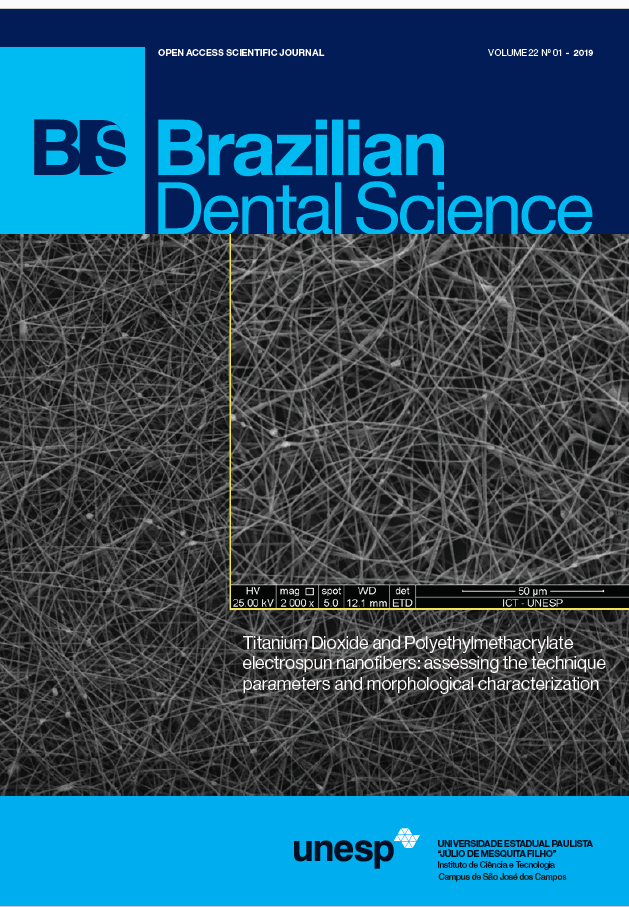Water sorption and solubility of a nanofilled composite resin protected against erosive challenges
DOI:
https://doi.org/10.14295/bds.2019.v22i1.1660Abstract
Objective: Erosive challenges are capable of demineralizing dentin and promote physical and mechanical changes in restorative materials. The present study investigates the water sorption and solubility of one nanofilled resin composite submitted to erosive challenges. It also studies procedures that can protect these surfaces. Materials and methods: 120 specimens were used. It was divided into four experimental groups according to the type of surface protection used (negative control, topical application of fluoride, resin-modified glass ionomer varnish and resin-based sealant). Subsequently, they were randomly assigned to three subgroups (n = 10), (negative control, 9 and 18 cycles of DES-RE). According to the exposure to the simulated solution of gastric acid (DES) (5% HCl, pH = 2.2) and subsequent remineralization (RE). The specimens were dehydrated until a constant mass was obtained and immersed in distilled water for 7 days, when they were weighed and submitted to a new dehydration. The values of water sorption and solubility were calculated according to the ISO 4049: 2000 specifications and analyzed statistically (2-way ANOVA / Tukey, alpha = 5%). Results: The water sorption and solubility averages after 18 cycles of DES-RE were statistically higher than negative control. Independently of the erosive challenge received, the specimens protected with the resin-modified glass ionomer varnish presented a significant increase in the values of loss and mass gain in relation to the other groups. Conclusion: No control method presented promising surface protection capacity of composite resin against to erosive challenges.
Keyword
Tooth erosion; Dental restoration permanent; Solubility.
Downloads
Downloads
Published
How to Cite
Issue
Section
License
Brazilian Dental Science uses the Creative Commons (CC-BY 4.0) license, thus preserving the integrity of articles in an open access environment. The journal allows the author to retain publishing rights without restrictions.
=================




























